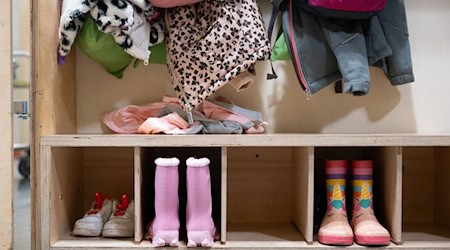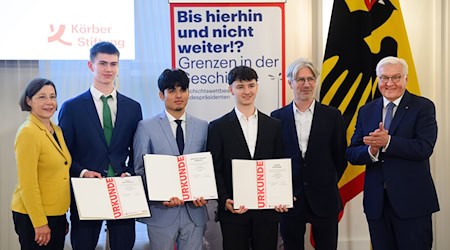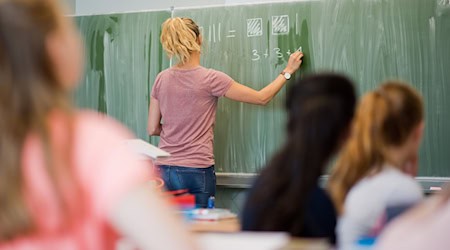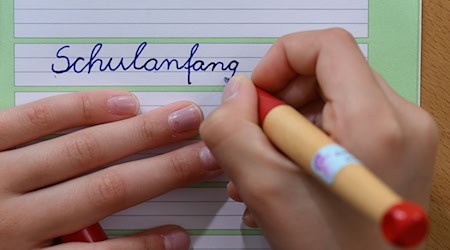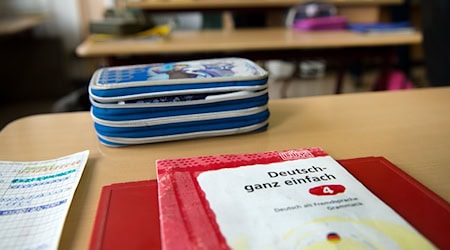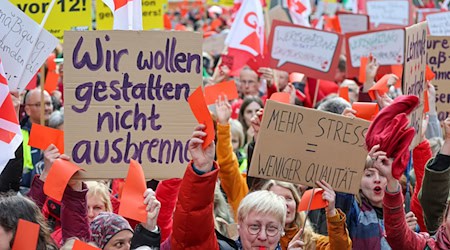For the first time in 10 years, fewer lessons were canceled at schools in Saxony than in the previous year. This result has been a long time coming, said Minister of Culture Conrad Clemens (CDU) in Dresden. "The turnaround is here. More teachers, less absenteeism. For the first time in ten years, absenteeism is falling - and that with rising pupil numbers." The initial data for the new school year shows that the measures taken in recent years are having an effect.
"We have not yet reached our goal. Too many lessons are still being canceled," said Clemens. There is currently a shortfall of 1,145 teachers to cover all lessons. The number of children with individual support needs is now at 7.2 percent. "We have far too few special needs teachers." This must also be reflected in future training. Every month, around 300 school-age children from migrant families register. The vast majority do not speak German.
How is absenteeism calculated?
The statistics differentiate between scheduled and unscheduled absenteeism. Scheduled absences occur when the timetable is canceled due to a lack of teachers and classrooms. Unscheduled absences are caused by teacher illness, school events, further training, strikes, school bus delays or other unforeseeable events.
What is the specific situation in Saxony?
According to the Ministry of Education, a total of 3.1 percent of lessons were canceled in August (previous year: 3.6 percent). In September, the figure was 3.2 percent (previous year: 3.7 percent).
The greatest improvement was seen in secondary schools, with a reduction from 8 percent to 5.8 percent (August) and from 7.8 percent to 5.8 percent (September). In grammar schools, absenteeism fell from 1.8 to 1.5 percent in August and from 1.8 to 1.4 percent in September. In elementary school, however, it increased: from 0.8 to 1.0 percent in August and from 1.0 to 1.4 percent in September.
Unscheduled absences were also slightly lower than in the previous year. It fell from 3.8 to 3.4 percent in August and from 5.6 to 5.4 percent in September.
In spring, Clemens launched a package of measures to improve the situation. Among other things, older teachers are to work more hours than before. In addition, more digital formats and more interdisciplinary teaching were targeted. There are also to be fewer written exams and class tests in order to reduce the amount of correction work. Teachers are to be seconded to schools with particular shortages.
More than six months later, the ministry is seeing success. The seconded teachers had ensured that fewer lessons were canceled at secondary schools, it said. "We have paid a price for this. We have a minimal increase in absenteeism at elementary school and vocational training centers."
Saxon Teachers' Association considers presentation misleading
The trade unions take a more differentiated view of the development. They say that although teacher secondments are reducing absenteeism at secondary schools, it is increasing at elementary school. It is merely a matter of redistribution, emphasized Michael Jung, head of the Saxon Teachers' Association (SLV). What is important is not just "whether lessons take place, but what is taught and how". We are experiencing a "fair-weather picture" that has little to do with the reality in schools.
The SLV considers the term "trend reversal" to be misleading. The figures do not reflect what is actually happening in many schools: "The statistics disguise the reality. In many schools, there were no regular subject lessons for weeks on end - instead, there were only class teacher lessons, shortened lessons or even just pedagogical support. However, this does not appear in the statistics as lost teaching time."
Diminishing work capacity due to more part-time work
According to the ministry, not all teachers are fully available for teaching. Last year, the proportion of teachers working part-time was 35.3 percent, now it has risen to 35.9 percent. Clemens supports a proposal from Bavaria to lower the age limit for children working part-time for family reasons from 18 to 14 - the state would then no longer have to approve part-time work for teaching staff with older children.
More pupils - but fewer in primary schools
There are currently 440,414 pupils in Saxony's schools. That is 1,276 more than in the previous year - an increase of 0.3 percent. At the same time, demographic change is already making itself felt. While the number of pupils grew in all types of secondary schools, it decreased in elementary school - from 141,386 to 139,145 girls and boys.
Copyright 2025, dpa (www.dpa.de). All rights reserved


